|
Books Should Be Free Loyal Books Free Public Domain Audiobooks & eBook Downloads |
|
|
Books Should Be Free Loyal Books Free Public Domain Audiobooks & eBook Downloads |
|
Top Authors |
|---|
|
Book type:
Sort by:
|
By: Charles Blanden (1857-1933) | |
|---|---|
 Omar Resung
Omar Resung
Most of the translations of the Rubaiyat of Omar Khayyam have been in verse. However, there have been three notable exceptions to this convention; the French translation by J. B. Nicolas (1867), the English version by Justin Huntly McCarthy (1889) and another English version by Frederick Rolfe (better known as Baron Corvo, the author of Hadrian VII), published in 1903. Charles Blanden (1857 - 1933) belonged to the group known as the Chicago poets, the most famous of which was Carl Sandburg. Unlike his celebrated contemporary... | |
By: Charles Boardman Hawes (1889-1923) | |
|---|---|
 Dark Frigate
Dark Frigate
The frigate Rose of Devon rescues from a wreck in mid-ocean twelve men who show their gratitude by seizing the Rose, killing her captain and sailing toward the Caribbean where they hope to plunder Spanish towns and galleons. Mistaking an English man-of-war for a merchantman, they are captured and brought back to England for trial. Only one, an English lad, Philip Marsham, a member of the original crew of the Rose, is acquitted; and he, after adventures in the forces of King Charles, tires of Cromwell's England and sails for Barbados once more on the Rose of Devon... | |
By: Charles Bradlaugh (1833-1891) | |
|---|---|
 Ancient and Modern Celebrated Freethinkers
Ancient and Modern Celebrated Freethinkers
| |
 Theological Essays
Theological Essays
Charles Bradlaugh was an English political activist and atheist who founded the National Secular Society in 1866. In the 23 "Theological Essays" collected here, he discusses his views on various topics such as whether man has a soul and if there is a God; who was Jesus Christ and the Apostles. He also deals in depth with various books of the Bible, gives an overview of the history of heresy, and tries to answer the question when the Gospels were written. | |
By: Charles Brockden Brown | |
|---|---|
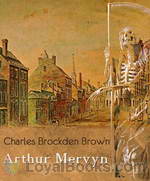 Arthur Mervyn
Arthur Mervyn
Kicked out of his parental home by his scheming young stepmother, a young country boy, Arthur Mervyn arrives in Philadelphia. Here he finds the city in the throes of a deadly yellow-fever epidemic. However, he finds a small job as a clerk and is determined to make his way in the world. He soon discovers that his employer is a con man and a murderer. One night, Arthur helps him dispose of a body in the river. While they're struggling with the corpse, the employer is swept away by the current... If you haven't encountered American Gothic before, Arthur Mervyn by Charles Brockden Brown is a great introduction to this genre... | |
By: Charles C. Bombaugh (1828-1906) | |
|---|---|
 Stratagems and Conspiracies to Defraud Life Insurance Companies: An Authentic Record of Remarkable Cases
Stratagems and Conspiracies to Defraud Life Insurance Companies: An Authentic Record of Remarkable Cases
A thorough treatise on different ways people have tried to defraud life insurance companies, with many entertaining examples. The present . . . volume is . . . commended as a trustworthy record to those for whose use and reference it is primarily intended—life insurance companies and agents, medical examiners, insurance lawyers, and medico-legal experts. . . . [It] is not confined to the exposure of the cunning contrivances and artifices of this class of schemers and plotters; it includes picturesque... | |
By: Charles C. Burleigh (1810-1878) | |
|---|---|
 Thoughts on the Death Penalty
Thoughts on the Death Penalty
This 1845 publication, written by a prominent reformer of the day, argues against capital punishment from several perspectives, including historical, philosophical and biblical arguments. It is broken into 3 chapters: Expediency, Justice, and Sacred Scriptures . Burleigh frequently references and argues against George B. Cheever, a prominent death penalty advocate of the time."If it shall thus be the means of helping on in a humble way the progress of that humane reform whose principles it advocates;... | |
By: Charles C. Nott (1827-1916) | |
|---|---|
 Mystery of the Pinckney Draught
Mystery of the Pinckney Draught
Charles Pinckney, member of the South Carolina legislature, Confederation Congress, U.S. Congress, and notably the Constitutional Convention of 1787, may have been regarded by some as perhaps the true author of the U.S. Constitution, although most likely James Madison would vehemently argue the point. This book investigates what may, or may not have happened to the draft of the Constitution which was drawn up by Charles Pinckney and submitted to the Constitutional Convention in May of 1787, and how (or if) it differed from the Constitution which was adopted... | |
By: Charles Clark Munn (1848-1917) | |
|---|---|
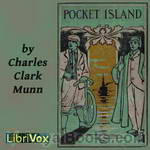 Pocket Island
Pocket Island
Along the coast of Maine are littered thousands of small islands. One such, named 'Pocket Island' by the locals was so called because of a pocket formed twice daily by the waning of the tides. The coast of Maine holds many secrets and legends, and Pocket Island was no exception. Subtitled "A Story of Country Life in New England", this story holds such varied and fascinating glimpses into the lives of a few individuals, and is not limited to merely a story of ghosts, of war, of barn dances, friendship, tales of rum-runners, smugglers, and seafarers... | |
By: Charles Cole Hine (1825-1897) | |
|---|---|
 Great Chicago Fire
Great Chicago Fire
Historical information relating the nature, extent, and consequences of The Great Chicago Fire of 1871, the insurance losses, and the relief costs. A brief interlude of comic relief is inserted midway in the form of a poem regarding the event.. | |
By: Charles Darwin (1809-1882) | |
|---|---|
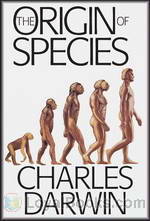 On the Origin of Species by Means of Natural Selection
On the Origin of Species by Means of Natural Selection
Considered to be one of the books that changed the world and how we view ourselves, On The Origin of Species by Charles Darwin was met with incredulous horror when it was first published in 1859. The revolutionary, almost blasphemous ideas it described were seen as antithetical to the existing ideas of Creation contained in the Bible and other religious texts. It was mocked, reviled and the author was personally subjected to vicious persecution by the establishment and theologians. In the years that followed its publication, the book became the subject of furious intellectual and social debate... | |
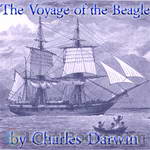 The Voyage of the Beagle
The Voyage of the Beagle
The book, also known as Darwin’s Journal of Researches, is a vivid and exciting travel memoir as well as a detailed scientific field journal covering biology, geology, and anthropology that demonstrates Darwin’s keen powers of observation, written at a time when Western Europeans were still discovering and exploring much of the rest of the world. Although Darwin revisited some areas during the expedition, for clarity the chapters of the book are ordered by reference to places and locations rather than chronologically. With hindsight, ideas which Darwin would later develop into his theory of evolution by natural selection are hinted at in his notes and in the book . | |
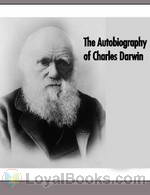 The Autobiography of Charles Darwin
The Autobiography of Charles Darwin
The Autobiography of Charles Darwin is the autobiography of the British naturalist Charles Darwin which was published in 1887, five years after his death. Darwin wrote the book, which he entitled Recollections of the Development of my Mind and Character, for his family. He states that he started writing it on about May 28, 1876 and had finished it by August 3. The book was edited by Charles Darwin’s son Francis Darwin, who removed several passages about Darwin’s critical views of God and Christianity... | |
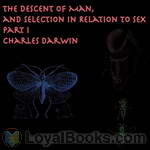 The Descent of Man and Selection in Relation to Sex
The Descent of Man and Selection in Relation to Sex
PART I. THE DESCENT OR ORIGIN OF MAN. Part 1 of 3 of book on evolutionary theory by English naturalist Charles Darwin, first published in 1871. It was Darwin's second great book on evolutionary theory, following his 1859 work, On The Origin of Species. In The Descent of Man, Darwin applies evolutionary theory to human evolution, and details his theory of sexual selection. The book discusses many related issues, including evolutionary psychology, evolutionary ethics, differences between human races, differences between sexes, the superiority of men to women, and the relevance of the evolutionary theory to society... | |
 Formation of Vegetable Moulds through the Action of Worms with Observations on their Habits
Formation of Vegetable Moulds through the Action of Worms with Observations on their Habits
Charles Darwin LL.B F.R.S was the discoverer of evolution and argued the role of "natural selection" in directing the evolution of species. Darwin also had an interest in the formation of soils (moulds) that began relatively early in his life, with a paper "On the Formation of Vegetable Moulds" delivered to the Geological Society of London in 1937. Darwin's last book, The Formation of Vegetable Moulds through the Action of Worms with Observations on their Habits, was completed in 1881. | |
 Origin Of Species by Means of Natural Selection (version 2)
Origin Of Species by Means of Natural Selection (version 2)
This is the 6th and last edition of "On The Origin of Species" with all additions and corrections, often considered the Definitive Edition. | |
By: Charles Dickens | |
|---|---|
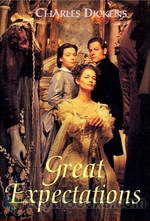 Great Expectations
Great Expectations
From the opening passage itself of Great Expectations by Charles Dickens, the reader is drawn into the world of the hero, Pip, who is at that time, seven years old. The author creates an unforgettable atmosphere: the gloom of the graveyard, the melancholy of the orphan boy, the mists rising over the marshes and the terrifying appearance of an escaped convict in chains. Told in first person (one of the only two books that Dickens used this form for, the other being David Copperfield) Great Expectations is a classic coming of age novel, in which we trace the growth and evolution of Pip or Philip Pirrip to give his full name... | |
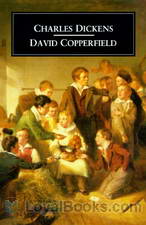 David Copperfield
David Copperfield
Charles Dickens is one of the most appreciated Victorian writers, his novels gaining worldwide recognition by both critics and readers. First published in 1850, David Copperfield begins with avid the tragedy of David's brother dying when David is just a boy. After this episode he is sent by his step-father to work in London for a wine merchant. When conditions worsen he decides to run away and embarks on a journey by foot from London to Dover. On his arrival he finds his eccentric aunt, Betsey Trotwood who becomes his new guardian... | |
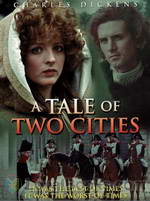 A Tale of Two Cities
A Tale of Two Cities
Its immortal opening lines, "It was the best of times, it was the worst of times..." set the stage for a sweeping narrative that combines drama, glory, honor, history, romance, brutality, sacrifice and resurrection. A Tale of Two Cities by Charles Dickens is one of the most widely read and famous works of historical fiction in the English language. Dickens had recently launched his magazine All the Year Round in 1859. In the same year, he began featuring A Tale of Two Cities in 31 weekly installments in his new magazine... | |
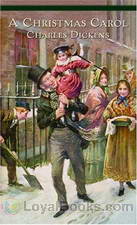 A Christmas Carol
A Christmas Carol
“A squeezing, wrenching, grasping, biting, clutching, covetous old sinner” is hardly hero material, but this is exactly what makes A Christmas Carol by Charles Dickens such an unforgettable book and its hero, Ebenezer Scrooge such an extraordinarily enduring character. In the book's celebrated opening scene, on the night before Christmas the old miser Ebenezer Scrooge sits in his freezing cold counting house, oblivious to the discomfort of his shivering young assistant Bob Cratchit. Scrooge is unremittingly rude to relatives and visitors alike who drop in to convey their Christmas greetings or ask for a contribution to charity... | |
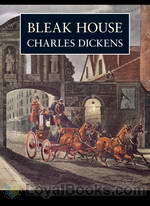 Bleak House
Bleak House
Over twenty consecutive months, Charles Dickens enthralled readers with his monthly installments of the novel Bleak House, a complex and compelling portrayal of the English judicial system. Serialized in his own magazine, Household Words, between 1852 and 1853, the book is deemed to be his finest work and is his ninth novel. Using an innovative literary technique known as “free indirect discourse,” where the narrator himself speaks through the medium of one of his main characters, Dickens uses the heroine Esther Summerson and an unidentified narrator as the vehicle for his story... | |
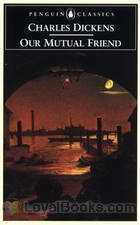 Our Mutual Friend
Our Mutual Friend
As the last published novel of a writer whose career spanned over a dozen novels, innumerable short stories, plays and nonfiction, Our Mutual Friend is indeed a great composition by Charles Dickens. Considered to be one of his most mature, insightful and refined works, Our Mutual Friend takes a long, hard look at what many Victorians loved but hated to admit they did—money. Dickens uses satire, irony, symbolism and biting wit to portray this unlovely picture of a society obsessed with material comforts and its hypocrisy about the means it uses to achieve its ends... | |
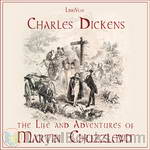 The Life and Adventures of Martin Chuzzlewit
The Life and Adventures of Martin Chuzzlewit
Dickens thought it was “in a hundred points, immeasurably the best” of his stories. Yet it was also one of his greatest flops. Compared to his other novels, The Life and Adventures of Martin Chuzzlewit was a dismal failure in terms of sales and the main reason for Dickens falling out with his long term publisher Chapman & Hall. They invoked a penalty clause and demanded that he pay back a portion of the advance which he refused. Martin Chuzzlewit was also dimly received in Dickens friendly America... | |
 The Pickwick Papers
The Pickwick Papers
A sportsman who doesn't hunt; a poet who doesn't write; a lover with no one to love; all three are devoted to their cheerful and benevolent leader, Mr. Pickwick. Join him and his friends, Winkle, Snodgrass, and Tupman, as they tour the country in search of adventures, knowledge, and stories. Along the way, they have their share of mishaps, and meet plenty of interesting characters, both the good and the not so good. (Mr. Pickwick's dedicated manservant, Sam Weller, is a scene-stealer sure to delight just about everybody... | |
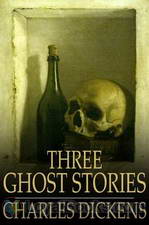 Three Ghost Stories
Three Ghost Stories
As a gifted writer with a strong interest in supernatural phenomena, Charles Dickens produced a string of ghost stories with enduring charm. Three of them are presented here, of which The Signal Man is one of the best known. Though quite different from his most celebrated realistic and humorous critical novels, these ghost stories, Gothic and grotesque as they are, are of good portrayal, and worth a read/listen. Summary by Vivian Chan | |
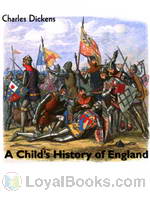 A Child's History of England
A Child's History of England
A Child’s History of England first appeared in serial form, running from January 25, 1851 to December 10, 1853 and was first published in three volume book form in 1852, 1853, and 1854. Dickens dedicated the book to “My own dear children, whom I hope it may help, bye and bye, to read with interest larger and better books on the same subject”. The history covered the period between 50 BC and 1689, ending with a chapter summarising events from then until the ascension of Queen Victoria. | |
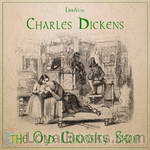 The Old Curiosity Shop
The Old Curiosity Shop
The fourth novel published by Charles Dickens, The Old Curiosity Shop was initially published in weekly installments between 1840 and 1841 and follows the poignant journey of the virtuous young girl Nell and her loving grandfather as they are forced to bear the hardships of life. Dickens cleverly employs contrasting eloquent characters as a utility to bring out the dissimilarity and injustice present in society. The novel introduces orphan Nell Trent and her grandfather, who live in a run-down store that is distinctive for its worthless bits and pieces... | |
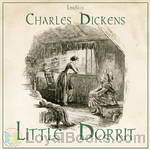 Little Dorrit
Little Dorrit
Originally published in monthly installments between 1855 and 1857, the novel focuses on the various forms of imprisonment, both physical and psychological, while also concentrating on dysfunctional family ties. Accordingly, Dickens avidly criticizes the social deficiencies of the time including injustice, social hypocrisy, the austerity of the Marshalsea debtors’ prison, and bureaucratic inefficiency. The novel kicks off with the introduction of William Dorrit, the oldest prisoner in the Marshalsea prison, who is also referred to as The Father of the Marshalsea... | |
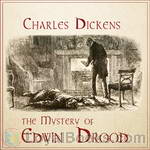 The Mystery of Edwin Drood
The Mystery of Edwin Drood
The Mystery of Edwin Drood is the final novel by Charles Dickens. It is a mystery indeed; the serial novel was just half completed at the time of Dickens’ death – leading to much speculation how it might have ended.The novel is named after Edwin Drood, one of the characters, but it mostly tells the story of his uncle, a choirmaster named John Jasper, who is in love with his pupil, Rosa Bud. Miss Bud is Drood’s fiancée, and has also caught the eye of the high-spirited and hot-tempered Neville Landless! Landless comes from Ceylon with his twin sister, Helena... | |
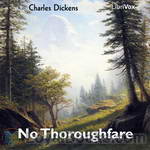 No Thoroughfare
No Thoroughfare
Two boys from the Foundling Hospital are given the same name, with disastrous consequences in adulthood. Two associates, wishing to right the wrong, are commissioned to find a missing heir. Their quest takes them from fungous wine cellars in the City of London to the sunshine of the Mediterranean — across the Alps in winter. Danger and treachery would prevail were it not for the courage of the heroine and the faithful company servant. The story contains crafted descriptions, well-drawn and diverse... | |
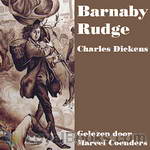 Barnaby Rudge
Barnaby Rudge
One of the two Historical novels Charles Dickens wrote, Barnaby Rudge is set around the ‘Gordon’ riots in London in 1780. The story begins in 1775 with Barnaby, his Mother, and his talking Raven Grip, fleeing their home from a blackmailer, and going into hiding. Joe Willet similarly finds he must leave his home to escape his Father’s ire, leaving behind the woman he loves. Five years later these characters, and many others whose lives we have followed, find themselves caught up in the horrific Protestant rioting led by Sir George Gordon... | |
 Dombey and Son
Dombey and Son
Dombey and Son is a novel by the Victorian author Charles Dickens. The story concerns Paul Dombey, the wealthy owner of the shipping company of the book’s title, whose dream is to have a son to continue his business. The book begins when his son is born, and Dombey’s wife dies shortly after giving birth. As with most of Dickens’ work, a number of socially significant themes are to be found in this book. In particular the book deals with the then-prevalent common practice of arranged marriages for financial gain... | |